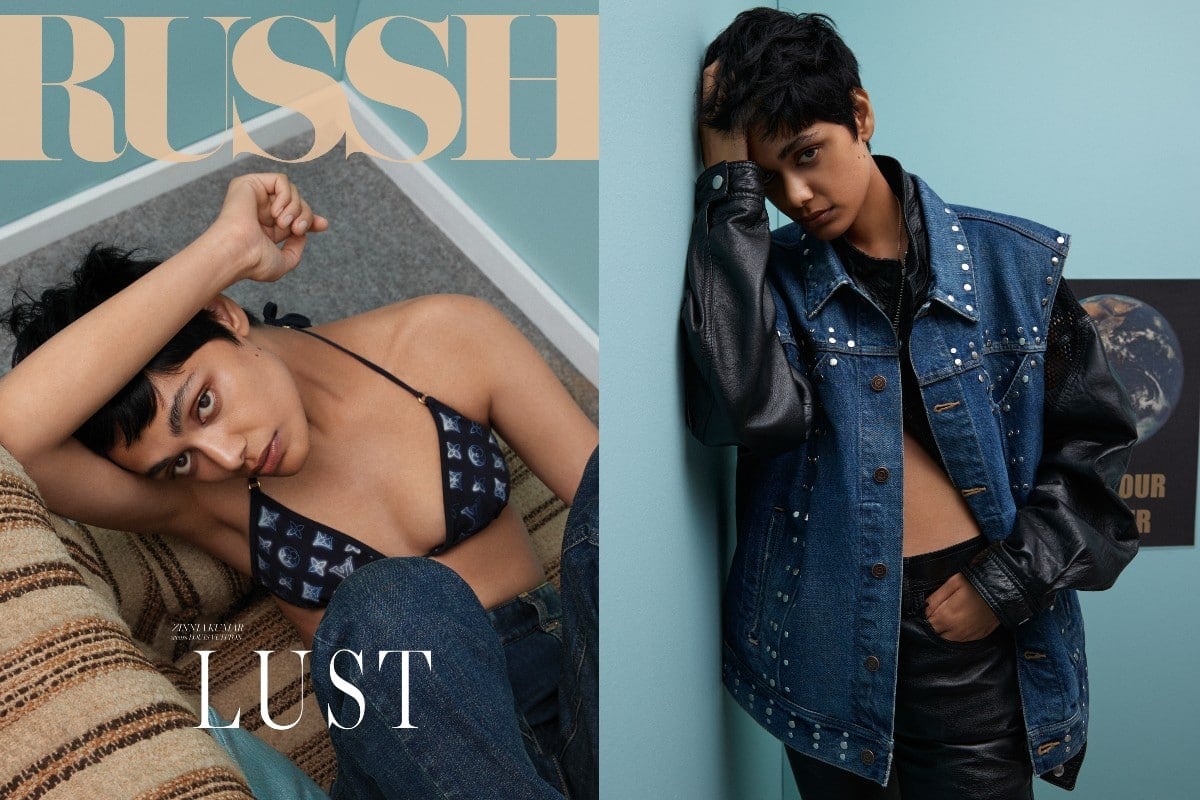
In celebration of 100 issues of RUSSH Magazine, our inaugural NFT was created, with its tokens dropped for free into the wallets of our closest friends at our recent F*ck Fashion, Let’s Dance party. A piece of digital art to commemorate a milestone in the magazine's history, to live on in the phones and digital realms of our nearest and dearest.
For many, the concept of a non-fungible token (NFT) can be baffling to comprehend. How does it differentiate from a simple right-click-save-image from Google? What makes it artistic, and how did the prominence of NFT’s rise over the years? To answer our pressing questions, Michelle Grey of Culture Vault explains the ins and outs of an NFT and what the future of digital art looks like.
For those of us still wrapping our heads around the concept, what is an NFT in the context of art?
An NFT is a unique, unchangeable, digital asset stored on the blockchain, a digital ledger that stores data. While NFTs can be anything digital, like illustrations, music, videos, animations, or even a tweet, much of the current excitement is around using the tech to sell digital art.
NFTs themselves are digital ledgers, but the data they “read” (such as JPEG, MOVs, MP4s, etc.) can be considered digital art in terms of their medium. The big difference between a JPEG you find on Google images is that because NFTs are minted on the blockchain, they give buyers a proof of provenance and proof of ownership. If you own something, you have the right to legally sell it. If you “right click” a YouTube video, you aren’t technically allowed to sell or trade that digital asset.
Blockchain technology allows NFTs to be more easily authenticated, making proof of ownership and provenance much more reliable.
It appears now NFT’s are cropping up more frequently, but when did the idea of digital art originate?
The first use of the term “digital art” was actually used in the early 1980s when computer engineers devised a paint program which was used by the pioneering digital artist, Harold Cohen. Since this early exploration into AI, Cohen continued to fine-tune the AARON program as technology became more sophisticated. Today, with the bevy of computer-based design tools readily available to the masses (in the same way that brushes and canvases are available to anyone who has the financial means to purchase them), digital art has exploded exponentially with the use of personal computers.
Prior to the blockchain, it was very difficult for digital creators to sell their work as proof of ownership of a JPEG or an MP4 was almost impossible to prove; there were no marketplaces available. Most graphic designers and digital artists were beholden to making work for brands and institutions, but that can be quite limiting creatively. Blockchain technology has opened a whole new arena for them to play in.
Skepticism surrounding NFT’s is still very prominent, some suggesting their digital nature makes them less than traditional art. How do you think opinions like this may change?
I think it’s safe to say that all art is subjective. Some of us like paintings, others are more partial to sculpture or even performance art. While many critics have made a living out of debating what is “real” art and what isn’t, it really comes down to what a consumer finds valuable and is willing to buy.
I think the exclusivity of the art world is starting to dissolve as social media has allowed many artists to connect directly with their collectors, something that blue chip galleries have traditionally held quite sacred. I personally think there is an endless and exciting amount of creative expression and collaboration that can come out of digital art – the very fact that one NFT can combine a sculptor, musician and animator into one work makes this medium truly unique.
NFTs, and to an extent digital art, is still in its infancy. As the technology and artists continue to develop and evolve, I expect we’ll be seeing some spectacular works coming to life. Maybe these will rival traditional art, and maybe they won’t, but I think for this new generation of makers, they’re not overly concerned about competition and categorisation – they just want to create work that moves them, and work that connects with their community.
In your opinion, will digital art works be held in the same regard as traditional media as the prevalence of and education surrounding NFT’s continues to grow?
I think it might, but it will be a slow burn. As with everything that's new, traditionalists take a while to come on board. It’s important to note blockchain technology is still in its very early stages. Only seven per cent of Australians have a crypto wallet, so not only does the traditional art world need to come on board, we still have to bridge the gap between the mainstream consumers and the crypto community.
As to whether digital art will be held in the same high regard as traditional mediums, I'm not sure. I still hear people debating whether photography or video art should be considered high art or not. But to me, what does it really matter? If artists are only creating to get the respect of an exclusive system put in place to oppress and keep out certain types of artists then I'm not sure I buy into that kind of existence anyway.
Celebrate our 100th issue with our genesis NFT, by registering for a free token. Click here to find out more. The first 100 people to register their wallet will receive a 100th anniversary RUSSH NFT. Registrations close at 11:59pm 18th May 2022.



